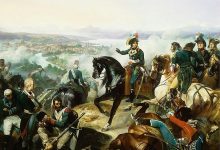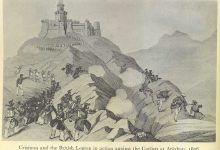The Battle of Weinsberg, 1525: A Turning Point in the German Peasants’ War
The Battle of Weinsberg, fought in 1525 during the German Peasants’ War, stands as one of the defining moments of the conflict, representing the tumultuous period of rebellion against the feudal system in the Holy Roman Empire. The war, marked by widespread peasant uprisings, pitted the peasants against the established nobility, who were clinging to their centuries-old privileges. In this article, we will delve deep into the background, key events, aftermath, and the significance of the Battle of Weinsberg, offering a detailed exploration of how it shaped the course of the German Peasants’ War.
Background: The German Peasants’ War
The German Peasants’ War (1524–1525) was a massive uprising involving peasants, artisans, and townsfolk in the Holy Roman Empire, particularly in the southern and central regions. This widespread revolt was fueled by social, economic, and political grievances, exacerbated by rising taxes, feudal oppression, and religious tensions, particularly the influence of Martin Luther’s Reformation ideas. While Luther’s writings inspired many in their demand for religious freedom, they also fueled broader discontent with the established hierarchies of feudalism and the Church.
The peasants, led by various local leaders and organizing under regional confederations, began to demand the abolition of serfdom, lower taxes, and the establishment of more equitable rights. However, the nobility, clergy, and local rulers opposed these demands, resulting in violent clashes throughout the Empire.
The Battle of Weinsberg, which occurred on May 31, 1525, was a crucial engagement within this broader struggle. It was fought between the forces of the Franconian peasants, who had risen in revolt against their overlords, and the forces loyal to Count Ludwig von Helfstein, a representative of the nobility.
The Lead-Up to the Battle
By the time of the Battle of Weinsberg, the German Peasants’ War had escalated into a full-scale rebellion. The peasants had formed coalitions and were marching under the banner of reform, aiming to dismantle the existing feudal structures. In the Franconian region, the peasants, bolstered by the support of local towns, had begun to push back against the feudal lords who controlled vast swaths of land.
Count Ludwig von Helfstein, a nobleman in the region, was tasked with defending the interests of the ruling class. His position was precarious, as he faced a growing wave of peasant unrest that was sweeping across the region. The peasants, now well-organized and numerous, sought to strike at key strongholds of the nobility in the hopes of dealing a decisive blow to their enemies.
One such stronghold was the town of Weinsberg, located in what is now southwestern Germany, near Heilbronn. The town was a focal point of resistance and an important strategic location in the region. With the help of local allies from the surrounding towns and villages, the Franconian peasants prepared to lay siege to Weinsberg.
The Battle: May 31, 1525
On May 31, 1525, the forces of the Franconian peasants clashed with Count Ludwig von Helfstein’s troops at Weinsberg. The battle was fierce, with the peasants employing innovative tactics and leveraging their knowledge of the local terrain to their advantage. The peasants’ forces were largely composed of farmers, artisans, and other non-professional soldiers, but their motivation and sheer numbers made them a formidable force against the smaller, more professional army of the nobility.
The peasants, already emboldened by earlier successes in the region, launched a decisive attack on the town’s fortifications, which were under the control of Count Ludwig’s forces. The battle quickly turned in favor of the peasants, who managed to overcome the defenders. The success of the peasant army at Weinsberg was a major blow to the feudal system and the forces of Count Ludwig.
However, the aftermath of the battle was even more significant. Following their victory, the peasants proceeded to massacre a large portion of Count Ludwig’s army. This massacre was a reflection of the anger and resentment that had built up over years of exploitation and repression under feudal rule. Many of the surviving soldiers from Count Ludwig’s forces were executed or left to perish, making the Battle of Weinsberg not only a military victory but also a brutal display of the peasants’ thirst for revenge against their oppressors.
The Massacre and its Impact
The massacre that followed the Battle of Weinsberg has been one of the most controversial aspects of the conflict. The decision to kill many of the defeated soldiers, along with the symbolic execution of Count Ludwig von Helfstein, was seen by some as a necessary act of retribution, while others viewed it as an act of unnecessary cruelty. The aftermath marked the battle as a tragic episode in the war, one that would have long-lasting implications for the relationship between the peasants and the ruling classes.
The victory of the Franconian peasants at Weinsberg raised their morale, but it also deepened the divide between the peasantry and the nobility. The brutal nature of the massacre only hardened the resolve of the nobility, and it fueled the determination of the rulers to suppress the uprising through more violent means. For the peasants, however, the Battle of Weinsberg was a moment of triumph—a fleeting opportunity to strike back against their oppressors.
Despite the victory, the German Peasants’ War was not won at Weinsberg. The peasants lacked the organization, resources, and leadership necessary to sustain their momentum. Within months of the battle, the rebellion was quelled by a combination of military force and political maneuvering by the nobles. The war ended with the defeat of the peasants, and many of their demands went unaddressed.
Conclusion: The Legacy of the Battle of Weinsberg
The Battle of Weinsberg remains a significant moment in the history of the German Peasants’ War. While it did not lead to a lasting change in the social or political structures of the Holy Roman Empire, it symbolized the peak of peasant resistance to feudal oppression. The massacre that followed the battle revealed the deep divisions between the ruling elite and the oppressed peasants, divisions that would persist long after the conflict had ended.
The German Peasants’ War itself may have been a failure for the rebels, but the battle and its aftermath left an indelible mark on the collective memory of the people. It highlighted the brutal realities of feudalism and the lengths to which the oppressed would go in their struggle for justice. In the broader context of the Reformation and the shifting dynamics of early modern Europe, the Battle of Weinsberg stands as a reminder of the volatility of class relations and the potential for uprising in the face of systemic injustice.
For those studying the German Peasants’ War, the events at Weinsberg offer a window into the complex interplay of social, economic, and political forces that characterized this turbulent period in history. It serves as a poignant example of how deeply entrenched social structures can be challenged, and the sometimes devastating consequences that follow when the oppressed rise against their oppressors.


